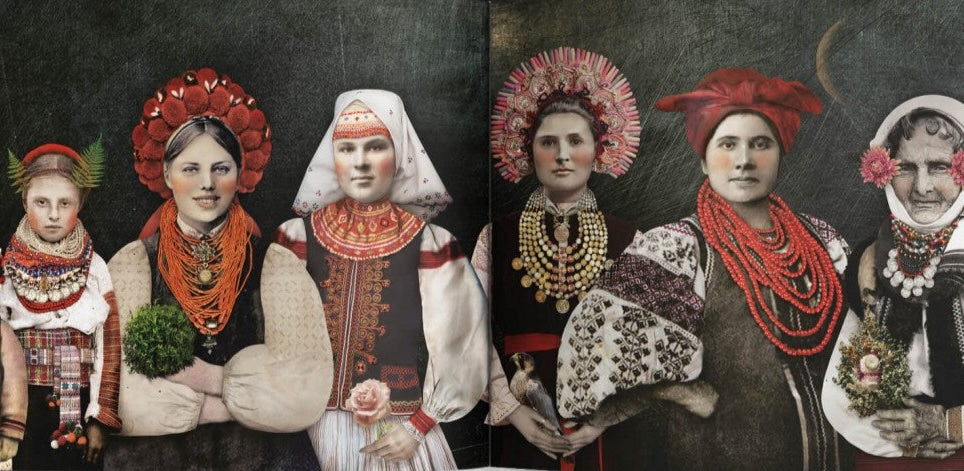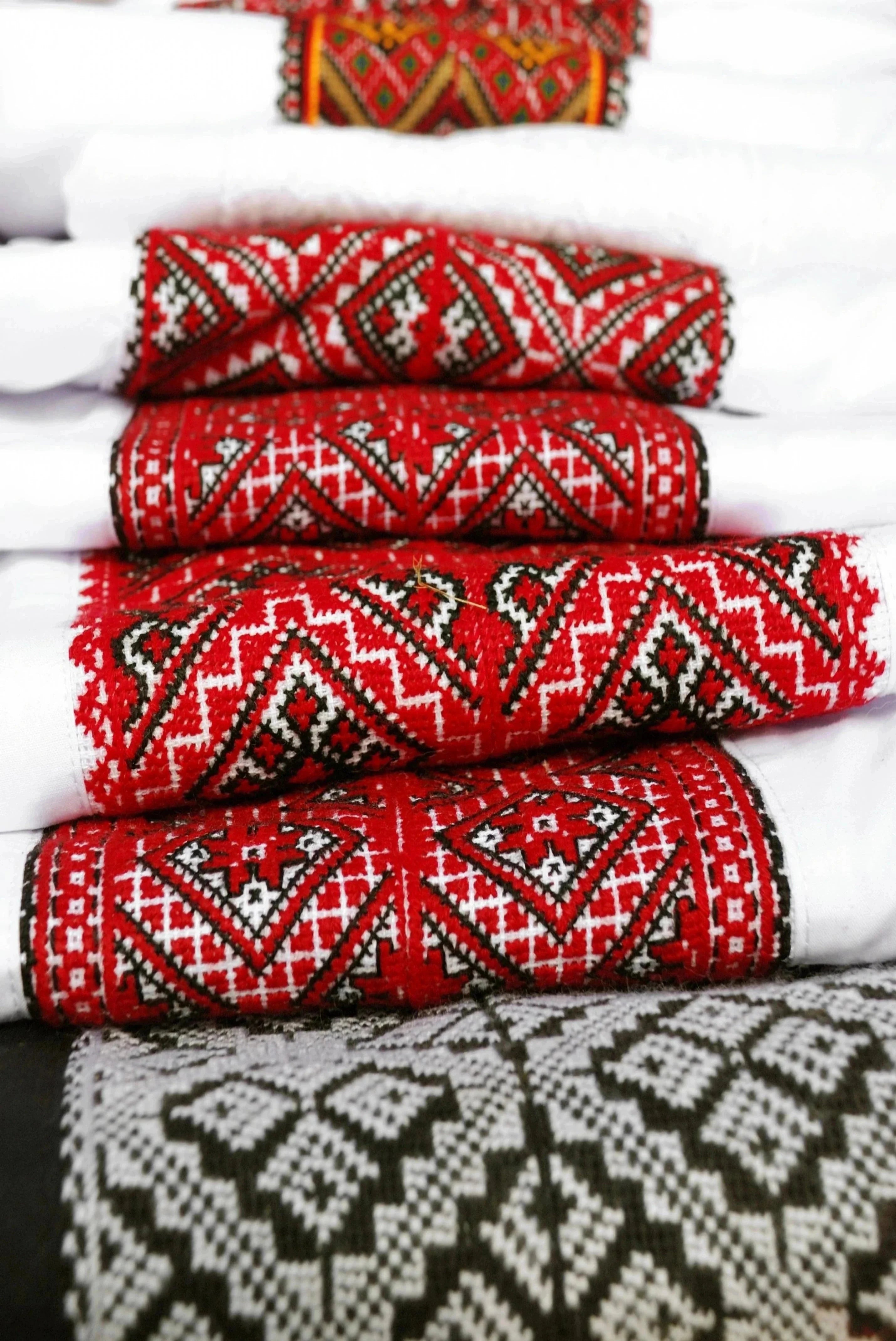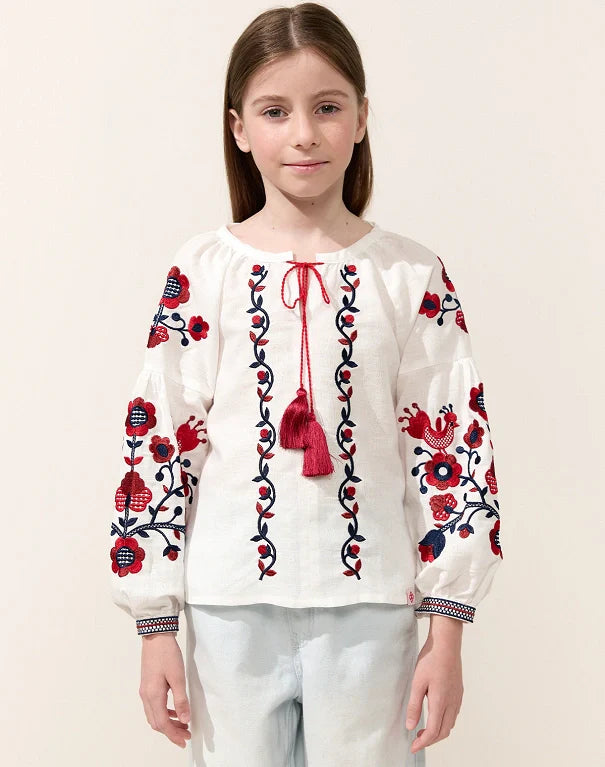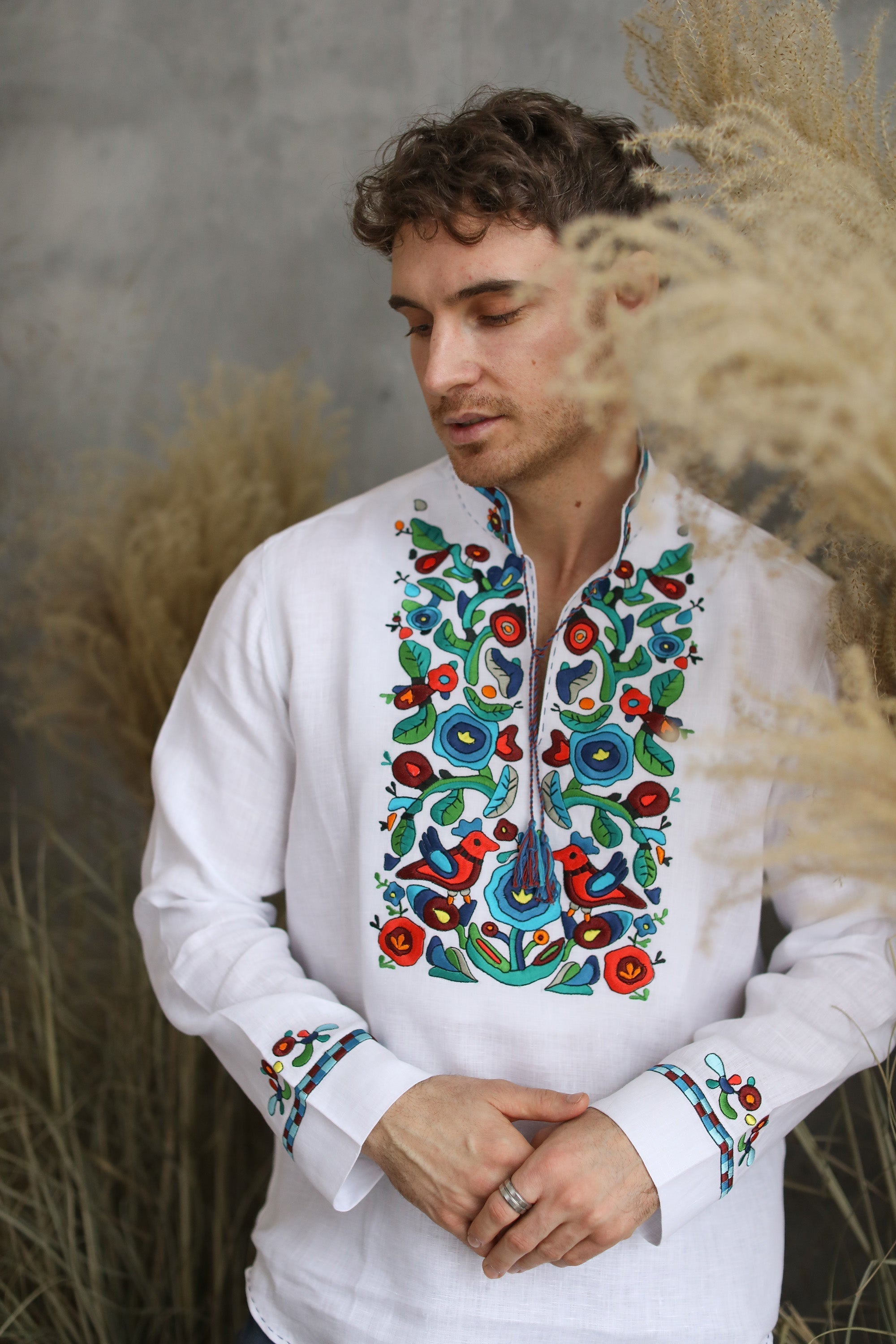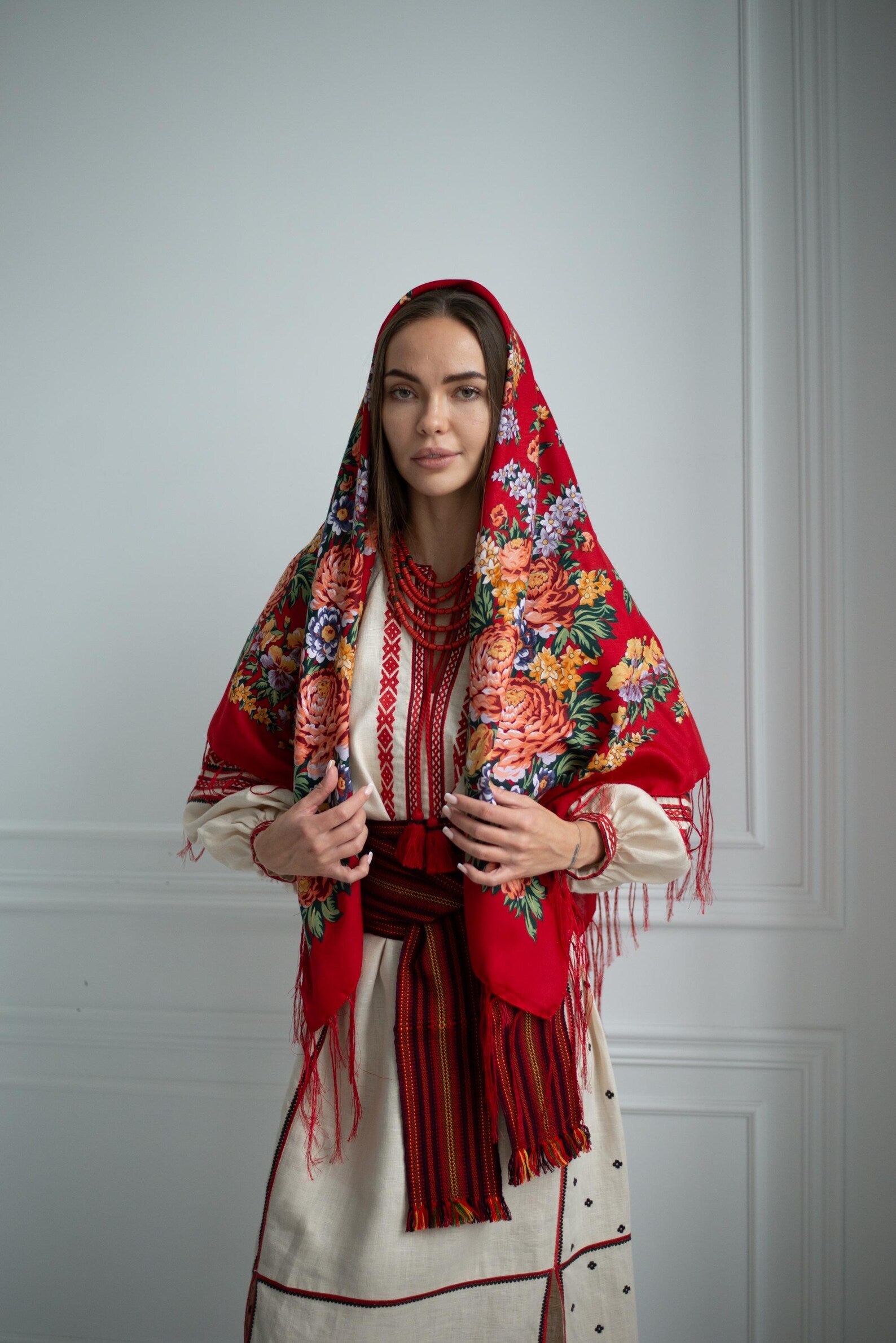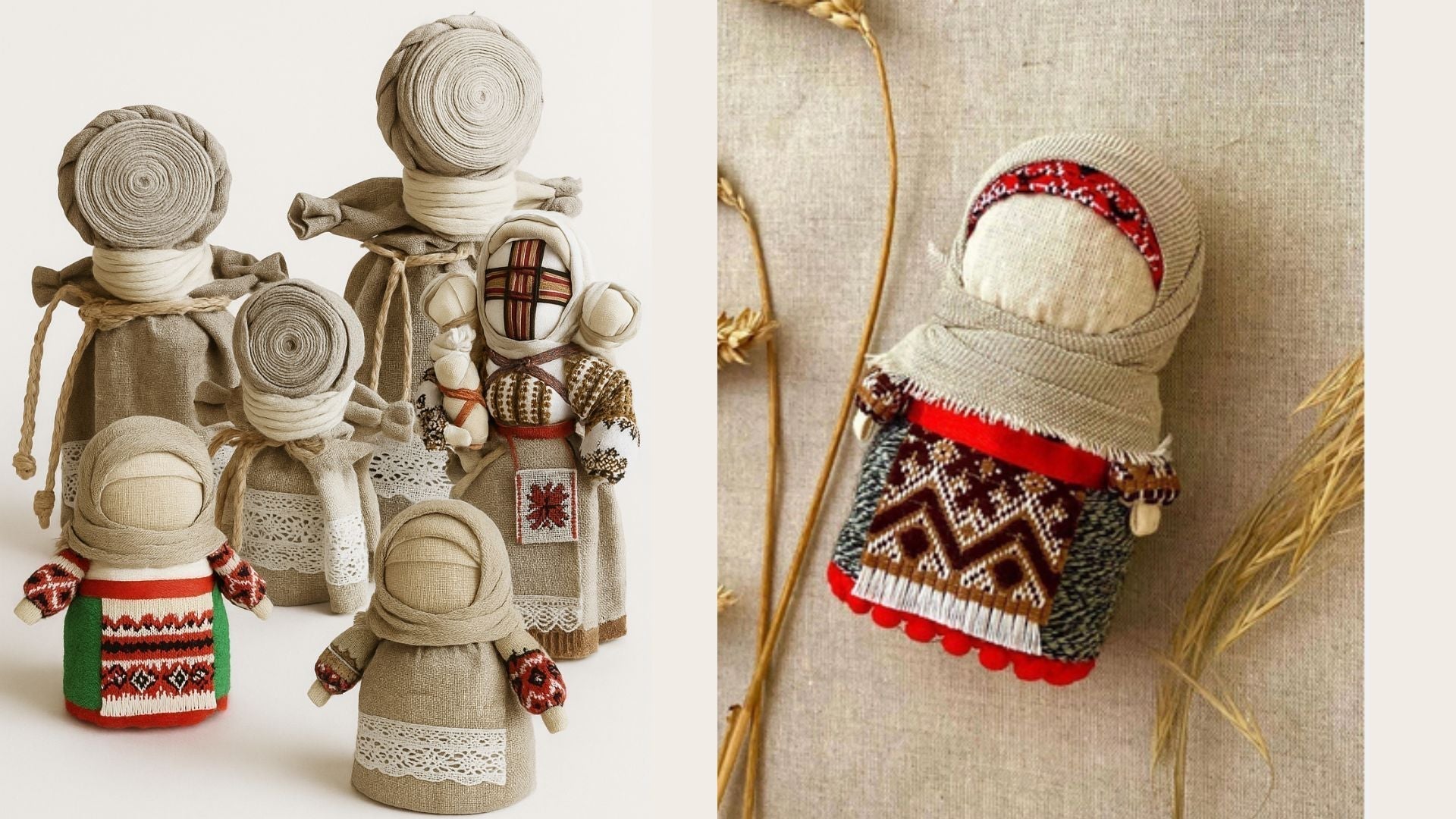
Threads of Love and Protection: The Ancient Motanka Dolls of Ukraine
How a simple faceless doll became a powerful talisman of family well-being and maternal wisdom in Ukrainian tradition
Introduction

MOTANKA DOLL FROM UKRAINE WITH HAND EMBROIDERY ON WOODEN STAND
On a winter night in a Ukrainian village long ago, a mother sits by the hearth gently winding scraps of cloth around straw. With each turn of fabric, she whispers a blessing for her family.
In her hands, a small faceless doll takes shape. This humble creation, made without a single stitch, is more than a toy – it’s a motanka, an heirloom talisman believed to guard the home and all who dwell within.
Such scenes have played out in countless households across centuries, binding generations through a shared act of love and hope.
Motanka dolls (мотанка) are ancient Ukrainian family talismans, symbolizing prosperity, goodness, and hope. In fact, the first knotted dolls of this kind appeared nearly 5,000 years ago and represented the unity of family and a deep connection between generations.
From the very beginning, motankas were crafted by winding fabric and threads by hand – without using needles or scissors – because cutting or piercing was thought to sever the doll’s positive energy or “destiny”.
Each doll was lovingly made from old clothes of family members, tied with sacred knots, and imbued with pure intentions as a protector of the household. Though simple in form, every motanka carried the prayers, blessings, and spirit of those who created it.


Ancient Roots and Sacred Symbolism
The very name “motanka” comes from motaty – “to wind” – reflecting how these dolls are formed by twisting and binding rather than sewing.
Our ancestors believed that a person’s fate should not be “cut” or “pierced,” so motankas were made with continuous threads and cloth to preserve their positive energy.
Usually in the form of a human figure (often a woman or a child), motanky were made from natural materials such as linen, hemp, and scraps of embroidered fabric, which were usually taken from favorite old clothes in the family, as well as from old, valuable towels.
This practice wove the family’s own history into the doll, strengthening its protective bond. Every knot tied in the doll could symbolize a wish or prayer, and the act of creation itself was a ritual: women would remain calm and focus on good thoughts as they made the doll, believing that the motanka absorbs the maker’s loving energy.

One of the most distinctive features of a motanka is its faceless head. Instead of a painted face, motankas are traditionally left blank or covered with woven cross-thread patterns. In Ukrainian folk belief, giving the doll a human face could invite a soul or unwanted spirits to inhabit it.
By remaining faceless, the motanka stays a neutral vessel of benevolent power – a pure guardian without a personal identity that might be corrupted. Often a cross of brightly colored threads is woven where the face would be, with horizontal and vertical lines intersecting.
This cross is an ancient solar symbol: the vertical line representing the connection between heaven and earth, and the horizontal line representing the link between past and future. In essence, the cross on a motanka’s face brings together male and female, sky and earth, ancestors and descendants – a cosmic harmony that blesses the home.
“It was believed that if a doll has eyes, it can become alive, and that is why there aren’t any,” explains Ukrainian folklorist Iryna Voloshyna, noting how young women would sometimes make a motanka while meditating on wishes like marriage or motherhood.
The motanka’s very form is thus rich with symbolism: an empty face to ward off evil and hold only good intent, and a body literally made from the “threads of fate” connecting one generation to the next.
In old Ukrainian homes, a beautifully adorned motanka doll often occupied the most honored spot in the house – perched high on a shelf or in the red corner near the family icons. Here she stood watch over daily life, silently bestowing blessings.
These dolls were treated with reverence, not as playthings but as members of the family. Each motanka was unique, created for a specific purpose and charged with a kind of spiritual duty.

A Talisman for Every Family Blessing
Across the centuries, motankas became interwoven with family customs and important life events. They were more than decorations – they were thought of as household guardians and helpers, each one carrying a specific prayer for family well-being.
Parents would gift motanka dolls during milestones as a way to pass on blessings and protect their loved ones. For example, when a couple married, they might receive a pair of Nerozluchnyky – “inseparable” motanka dolls joined together – to ensure unity and fidelity in their marriage.
When a baby was born, a mother or grandmother would swiftly swaddle a tiny motanka called a Pelenashka and place it in the cradle to guard the infant from illness and envy. Sometimes a few breadcrumbs were tucked into these cradle dolls as a kind of pacifier, and herbs with healing powers were inserted to keep sickness at bay.
As the child played with these little dolls, the motankas were believed to “absorb” any looming illness or bad energy – later, the used dolls would be respectfully burned or buried to dispel that absorbed misfortune.
At every stage of life, there was a motanka to watch over the family’s hopes and needs. Young girls, for instance, learned nurturing by playing with motanka dolls, developing the caring skills they’d use as future mothers.
Families crafted wedding motankas to bless a new household with harmony and fertility – one popular bridal doll called Narechena (“Bride”) had a long braided tassel, symbolizing wishes for a long, happy married life. To encourage fertility, a special Rodyuchist’ motanka might be presented to a couple, carrying the wish for many healthy children.
There were even motankas devoted to daily blessings: a doll with many tiny arms, the Desyatyruchka or “ten-handed” doll, was said to help a mother accomplish all her household chores, while a motanka with a bundle of herbs could cleanse bad energy from the home. For travelers, a pocket-sized motanka called Podorozhnytsya would be carried along to ensure a safe journey and a happy return. Each doll had a name and purpose, reinforcing how deeply ingrained these amulets were in family life.

Underlying all these customs was a sincere belief that the motanka, born of loving intent, would protect the family from misfortune and attract blessings. During hard times—be it poor harvests, illness, or danger—Ukrainian women turned to motankas as a form of folk prayer.
They would craft a doll specifically to guard the family through the crisis, often placing it near the entryway or the stove, which was the heart of the home. These guardian dolls (known as berehynya motankas) commonly had herbs like chamomile or thyme stuffed inside their bodies and sometimes coins or grains as offerings for prosperity.
The herbs were not only fragrant; they were symbolic charms to chase away evil and sickness. Colors, too, carried meaning: red threads were used for protection and vitality, blue for healing and water, green for fertility and renewal, white for purity and harmony. In this way, every element of a motanka – from its fabric and fillings to its color scheme – was deliberately chosen to amplify its intended blessing.
Family lore is rich with stories of motankas believed to have averted tragedies or brought good fortune. While skeptics might see just a rag doll, generations of Ukrainians saw a silent guardian imbued with their ancestors’ prayers.
It became common to say that as long as a motanka watched over a household, the family would never be alone – the wisdom of past generations and the protection of higher powers were always near. Little wonder that some motankas were kept for decades, passed from mother to daughter, growing more precious with time.
And when a motanka had fulfilled its purpose or became too worn, it was never casually discarded; instead, it was given a respectful farewell (by burning or burying) to release the energies it contained back to the earth. This gentle retiring of a motanka was akin to thanking a family friend for its service and ensuring its protective spirit could continue to watch from beyond.

Motherly Wisdom, The Berehynia
At the heart of the motanka tradition is the figure of the Mother – the nurturing force that sustains family and community. It’s no coincidence that the most iconic motanka is often called the Berehynia (berehynya), a word meaning “protectress” or “hearth mother” in Ukrainian folklore.
The Berehynia motanka typically took the form of a robust female figure with a scarf over her head, sometimes depicted with exaggeratedly full “motherly” features (like a generous bosom symbolizing abundance) and always bearing the cross of threads on her face. She embodied the progenitor mother, the wise matriarch, the guardian of the family hearth.
In traditional belief, this doll was much more than fabric; she was seen as the spirit of the home itself, an earthly stand-in for the ancient mother goddess who watches over the world of humans. A Berehynia motanka would be prominently displayed in the house to preside over daily life with an air of benevolence and authority.
Mothers and grandmothers were often the creators of motankas, and through this craft they passed down not only the skill of doll-making but also the values and hopes of the family.
The secrets of making these dolls – the prayers whispered, the time of day or phase of the moon chosen for crafting, the particular herbs to include – were passed from mother to daughter like a sacred family recipe. This matrilineal transfer of knowledge reinforced the motanka’s role as a vessel of female wisdom and love. In many families, the first motanka a girl received might be from her mother or grandmother, given on a special occasion, symbolizing the transfer of protection.
As one folk saying went, “A household with a motanka is a household under a mother’s wing.” Even when children grew up and moved away, a motanka doll gifted by the mother would accompany them, carrying a piece of home and a mother’s blessing into the wider world.

The Berehynia motanka in particular came to represent Ukraine’s archetypal Mother-Protectress. She parallels an old Slavic belief in a goddess of home and fertility; in modern Ukraine, the image of Berehynia has been reimagined as a national symbol of guardianship (for example, the Berehynia statue rising over Independence Square in Kyiv).
In the context of the motanka, Berehynia is the doll dedicated to the well-being of the entire household. It was believed that if this doll stood guard, the family would prosper. She would “bring wealth and success to the family,” folklore says, as long as she was treated with respect.
Families often turned to the Berehynia motanka in pivotal moments – when starting a new home, during a family member’s illness, or at the new year – asking for her guidance and protection. The maternal energy emanating from these dolls provided emotional comfort as well. In times of trouble, simply holding the motanka or retying her headscarf could feel like getting a reassuring hug from one’s own mother or grandmother, reminding the family to stay hopeful and united.

HANDMADE MOTANKA DOLL ON WOOD STAND
It is poignant that during Ukraine’s turbulent history, when fathers and sons went off to war or work, the motanka – created and kept by the women of the family – remained as a steadfast symbol that motherly love and ancestral spirit would guard the home front. This feminine protector gave strength to those left behind.
Through famine, conflict, and hardship, the Berehynia motanka’s quiet presence in the home assured families that the light of wisdom, love, and unity would not be extinguished. She is, in essence, the timeless mother watching over all her children – a role that resonates universally, far beyond Ukraine’s borders.

A Living Tradition – From Suppression to Revival
Like many folk traditions, the motanka doll faced challenges in the modern era. During the Soviet period, open practice of many Ukrainian cultural customs – especially those with spiritual overtones – was discouraged or fell out of everyday use.
The art of making motankas survived quietly in rural areas and private homes, but it was no longer as widespread or publicly celebrated. Many of the old rituals and meanings were remembered by only a few. By the late 20th century, the motanka was at risk of fading into obscurity, a quaint relic in danger of being forgotten.
Yet, just as the motanka is a symbol of resilience, the tradition itself has proved resilient. In recent decades, especially since Ukraine’s independence, there has been a powerful revival of interest in motanka dolls as part of a broader renaissance of Ukrainian folk art and identity.
Artisans and cultural enthusiasts began rediscovering and celebrating motankas as symbols of cultural resilience, protection, and spiritual connection. Today, in the 21st century, the motanka has made a remarkable comeback. Many households in Ukraine – and even overseas – have once again welcomed motanka dolls as traditional “oberihs” (amulets) in their homes. What was once at risk of being an “old village custom” is now embraced by young and old, in cities and villages alike, as a cherished link to the past and a source of pride in Ukrainian heritage.

UNIQUE HANDMADE MOTANKA DOLL - POPPY SEEDS
Contemporary Ukrainian artisans craft motankas in both traditional styles and modern artistic interpretations. Walk through a folk art market in Lviv or browse an online shop, and you will find motanka dolls of all sizes and designs: some stick to age-old methods (no glue or needles, only winding cloth; natural dyes and materials; filled with grains or herbs for meaning), while others experiment with new colors and motifs. Importantly, the act of making a motanka has been transformed into a form of meditative art and personal devotion.
Workshops and master classes are popular; it’s not uncommon to see a group of people – not only women these days – gathering to learn how to wind their own motanka, often as a communal prayer for peace or well-being. Participants speak of the calm focus that the process brings: as they wrap each thread, they concentrate on positive intentions, effectively weaving their prayers into the doll. In a fast-paced, digital world, the tactile act of creating a motanka offers a healing reconnection with one’s roots and with the simple joys of handcrafting something meaningful.

The motanka’s symbolism has also evolved in beautiful ways for the modern era. It has become a universal emblem of hope, love, and protection – values that resonate with people everywhere, not just Ukrainians.
You might find a motanka doll on the shelf of a Ukrainian diaspora family in Canada, or given as a heartfelt gift to a friend in Germany, or standing as a colorful art piece in a New York apartment – in each case, it carries the message of “I wish you safety, prosperity, and the warm embrace of family.”
During recent difficult times in Ukraine, such as periods of conflict and uncertainty, motankas have often been made and sold to raise funds or lift morale, blending traditional craft with contemporary solidarity. The sight of a motanka now can be a quiet statement of Ukrainian identity and endurance – a reminder that threads of culture and family can never be broken, even by the worst challenges.
Crucially, the motanka has found a place not only in folk culture but also in art and education. Museums host exhibits of antique and artist-made motankas, highlighting their artistic merit and storytelling power.
Schools sometimes include motanka-making in craft lessons, so that children grow up understanding the significance of this doll. UNESCO has recognized various elements of Ukrainian cultural heritage (such as pysanky eggs and vyshyvanka embroidery), and while motanka dolls are not yet on the international heritage lists, they are increasingly recognized by cultural organizations as a valuable tradition to preserve.

What makes the motanka especially endearing to a global audience is the universal human sentiment it encapsulates. Every culture has symbols of home and love – and the motanka is Ukraine’s. It speaks in a silent language of textile and thread but conveys something all people understand: the desire to protect one’s family and to hand down wisdom through the generations.
In our modern lives, many people seek objects with soul and story, rather than mass-produced ornaments. A handcrafted motanka doll fulfills that desire deeply. It’s not only a piece of folk art; it’s a story in itself – of a mother’s love, a grandmother’s prayer, a child’s smile, and a nation’s spirit.
Conclusion – Weaving Tradition into Today’s World
In a world that sometimes feels fragmented and impersonal, the Ukrainian motanka doll offers a tender reminder of what “home” truly means. It carries forward the warmth of family, the strength of tradition, and the belief in blessings that protect and prosper. The motanka may be ancient, but her message is timeless – that love and hope, when woven into something with intention, become a lasting shield against life’s storms.
Today, embracing a motanka in your home is more than an act of cultural appreciation; it’s an invitation to connect with universal values of caring and unity. As global interest in these dolls grows, artisans continue to create them with the same love and positive energy that Ukrainian mothers did centuries ago.

If you should hold a motanka doll in your hands, know that you are cradling generations of prayers and stories. You might even feel inspired to start a new story with it in your own life – as a meaningful decor piece, a teaching tool for your children about heritage, or a heartfelt gift to someone starting a new family.
In recent years, beautifully crafted motankas have become available worldwide, allowing anyone to share in this tradition. For instance, the “Berehynia – Protector of Home and Family” motanka doll on ND Ukraine’s online store is a stunning handmade piece that embodies the classic guardian spirit of the Berehynia. Bringing such a doll into your living room is like inviting an honored ancestor to take a seat by your hearth – a gentle guardian who asks for nothing and gives comfort and blessings in return.
As we kick off this series on Ukrainian motankas, we celebrate not only the dolls themselves but the love and wisdom they represent. The motanka’s ancient thread continues unbroken into our time, reminding us that no matter how complex life becomes, our deepest needs remain simple.
We all yearn for the well-being of our loved ones, the prosperity, goodness, and hope that a little doll promises to uphold. Through the motanka, we discover that the simplest threads – when spun with faith and affection – can indeed hold a family, or even a community, together.
HANDMADE MOTANKA DOLL WITH GRAIN OF WHEAT

